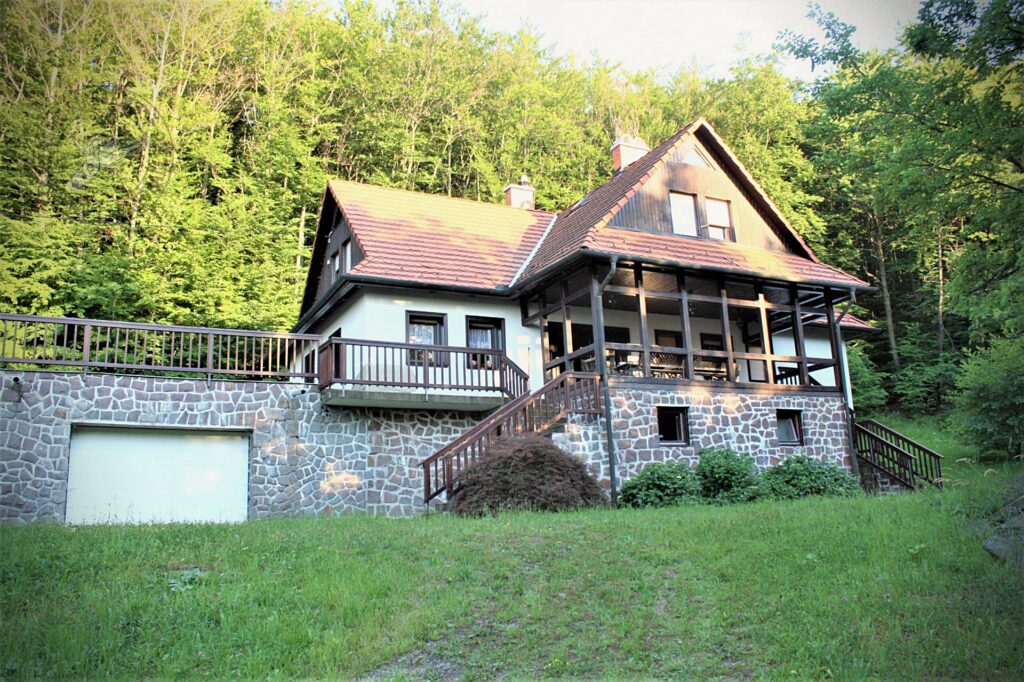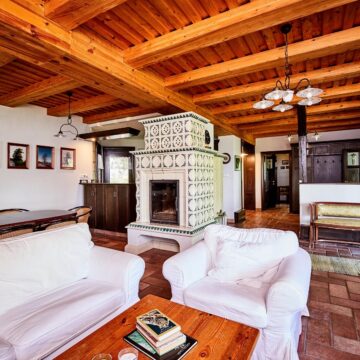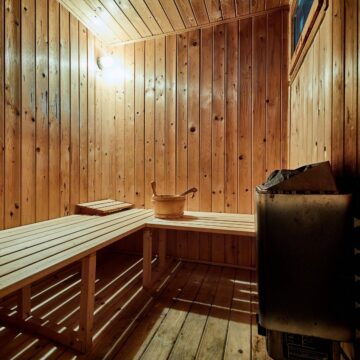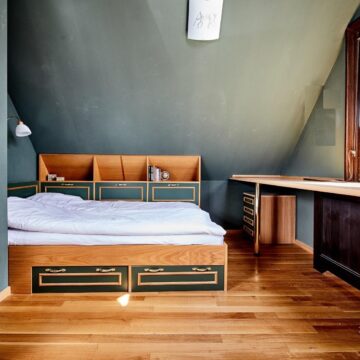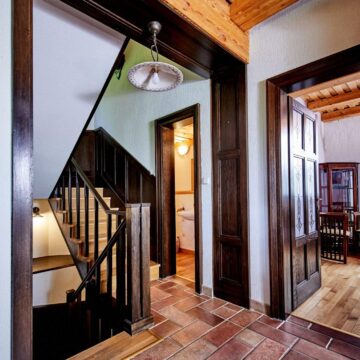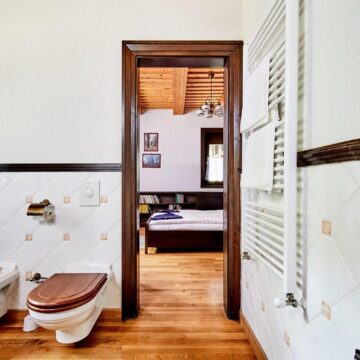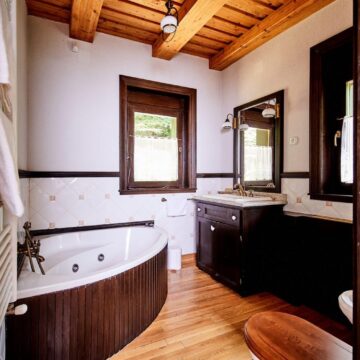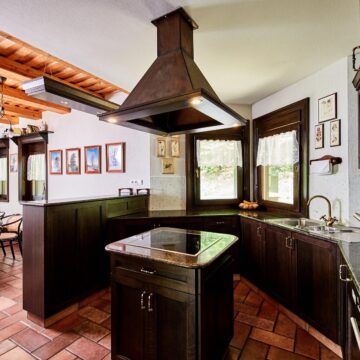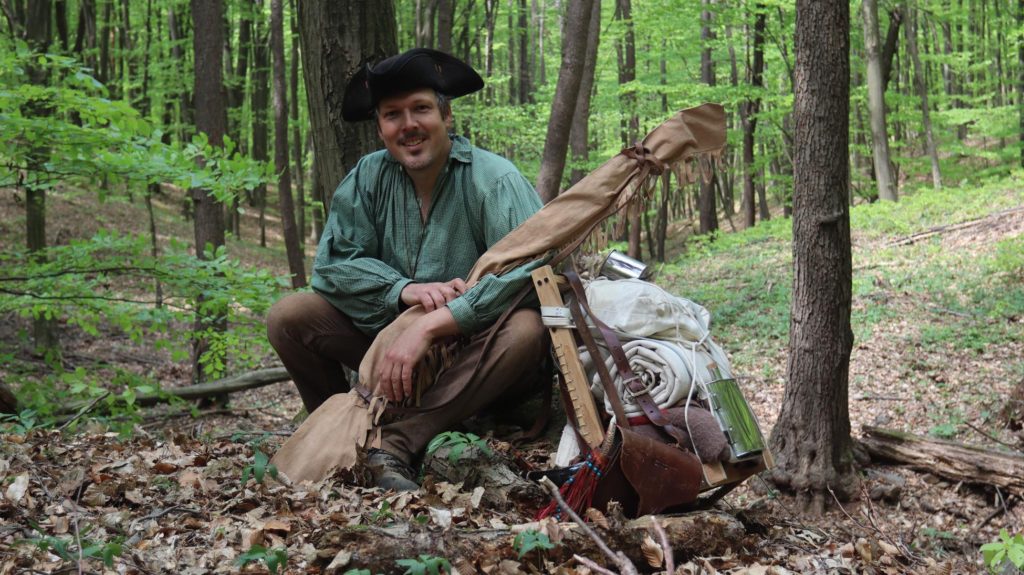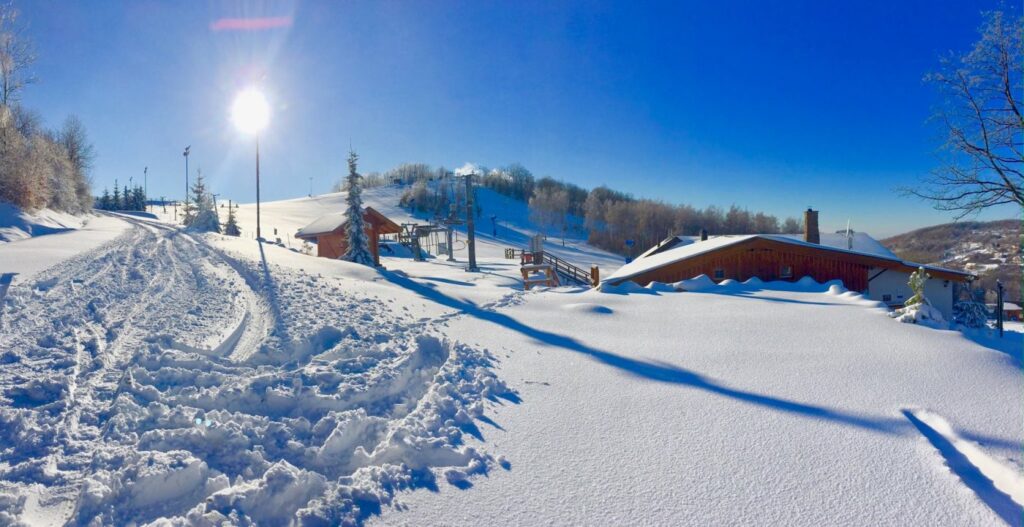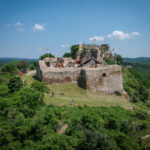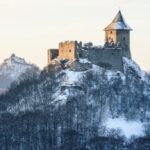So you are looking for the excellent hunting grounds seen on the Capandball YouTube Channel? You are looking for a 100% Hungarian experience? We have the right location for your, the Capandball Resort – a step back in time, a step to get closer to traditional rural Hungary and nature
The Capandball Resort was a long-time dream we cherished together with my brother Victor. For many years we were looking for a place we can use as headquarters for hiking, walking and hunting the traditional trails of Hungary’s highest mountains, the Mátra mountains. When we first saw the traditional hunting lodge, it was a love at first sight. The house is located just at the very upper edge of the little village Mátraalmás, exactly where the forest starts. That’s a quiet and remote location, but still close to Budapest, only 90 minutes’ drive from the capital. This place has a very special mood. The sound of the little stream just below the entrance of the house carries you away immediately, tells about a time when everything was simpler and slower, when people had time to talk to each other, and notice the little secrets Mother Nature offered. Probably the call of long gone our ancestors brought us here. Our great-grandfather was born among these hills and lived his whole life as a glassblower, a very traditional activity still living in this region.
The Resort
Location: Hungary, 3154 Mátraalmás-Szuha, Áfonya u. 31. Google Maps Link
Contact: Viktor, +36309341688 E-mail: capandballresort@kapszli.hu
The Capandball Resort has everything you need to experience a perfect traditional but comfortable stay, weather you are looking for challenging hunting activity, hiking or just relaxing. On the ground floor of three-storey building a huge living room is located with American-style kitchen, and a traditional Hungarian tiled-stove fireplace in the heart of the space. A beautiful place to spend the evening hours, sharing your experiences with your family of friends listening to the calm sound of fire crackling. The huge terrace is just beside this space from where you have a fantastic view to the mountains and the village. The house has four bedrooms:
- A bedroom with separate bathroom and double bed on the ground floor
- Three bedrooms with a double and a single bed on the first floor, these rooms are served with two other bathrooms and three toilette.
Nothing can be better on a cold day of hunting or hiking than enjoying the recharging heat of the Finnish sauna. The basement offers this possibility to our guest, having a sauna for six persons. The house has two large terraces with an excellent view.
Hunting
Hunting is challenging here. If you are looking for easy, instant success, these mountains are not your place to hunt. I have been hunting these forests for many years, and I can assure that you will have an adventurous hunt here. The region if full of game, a large and healthy population of red deer is the king of the area, but mouflon, roe deer and wild boar are also here in large numbers. Fallow deer hunt is also accessibly, although needs half an hour of travel. If you are looking for small game hunting like pheasant and jack rabbit, that’s also possible nearby. You can enjoy all hunting methods here regardless if you are looking individual or driven hunts. For more info please contact us by email!
Biking
More than 20 bike routes are crossing the area connecting the picturesque locations of Galyatető, Mátraalmás, Mátraszentistván, Mátraszentimre and Mátraszentlászló. Flat, hilly, uphill, downhill, quick and long routes are accessible, matching your skill and endurance.
Hiking
The Mátra mountains’ highest point is a 1014-metres (3327 ft) peak in the High-Mátra mountain range, Kékestető, which also hosts a climate therapy facility. Visitors can enjoy the crystal-clear mountain air, hikers can find 400 kilometres (250 miles) of maintained hiking paths.
https://www.outdooractive.com/en/hikes/matra-videk/hiking-trails-in-matra-videk/23364644/
Skiing
The Hungarian Ski Resorts of Mátra has direct access to 11km of downhill skiing, with 5 marked pistes, served by a total of 7 ski lifts. The skiing is at relatively low altitude, so snow cover can be variable.
Mátraszentistván Ski Park
Found in the Matra mountain range in northern Hungary, this ski park offers ten slopes of varying difficulties, as well as 3km of floodlit slopes perfect for evening skiing. Snow cannons ensure skiable pistes throughout the season and there’s a “funpark” for those who want to practice jumps and show off their skills. A ski school caters to beginners and those hoping to hone their skills, while a snow slide park with snowtubing provides a fun space for kids and anyone wishing to enjoy the snow in a more relaxed way.
Mátraszentistván Ski Park, Mátraszentimre, Hungary +36 37 376 685
Kékestető Ski Park
Found on the highest peak of Hungary, this is also one of Hungary’s oldest ski slopes. Two runs offer different conditions for skiers: the southern slope is ideal for beginners, and thanks to a number of snow cannons isn’t totally reliant on natural snow. The 590m-long northern slope offers more challenging skiing and is viewed as one of the country’s most difficult runs; there are no snow cannons, so this slope is only operational in case of natural snow. Ski rentals are available, there are a number of ski chalets and restaurants, and a TV tower offers a lookout platform with stunning panoramic views.
Kékestetö, Kékestető külterület, Gyöngyös, Hungary +36 37 560 008
History and tradition
Hollókő
 Hollókő is undoubtedly the country’s best-known village, and for no insignificant reason: in 1987, it was first together with Budapest to be included in the list of World Heritage Sites by the UNESCO World Heritage Commission. Its unique and universal significance lies in the fact that the village, which gained its present shape in the 17th and 18th centuries, is an unparalleled example of traditional architecture and village life before the 20th century which has been preserved in its original form. Hollókő is still very much alive and not an open-air museum; its ancient houses remain inhabited until the present day. The village of Hollókő (means raven-stone) has two main parts, the old village and the new village. The older part has 58 traditional houses built in the architecture style of the Palóces (pr. pah-lotz) after 1909, but in the original style of the 17th century. The temple of the village has written memories from 1343, but the well-known wooden tower of it was built in 1889. You will also find in the old village the Doll Museum and the Village Museum, both worth it to visit. The old village represents the folk art and traditions of the Palóc folk. Above the village the castle built in the 13th century is proudly protruding taking care of the peace of the region. Its history is both hectic and legendary, at the same time, just like the scenery of a fairy tale becoming reality.
Hollókő is undoubtedly the country’s best-known village, and for no insignificant reason: in 1987, it was first together with Budapest to be included in the list of World Heritage Sites by the UNESCO World Heritage Commission. Its unique and universal significance lies in the fact that the village, which gained its present shape in the 17th and 18th centuries, is an unparalleled example of traditional architecture and village life before the 20th century which has been preserved in its original form. Hollókő is still very much alive and not an open-air museum; its ancient houses remain inhabited until the present day. The village of Hollókő (means raven-stone) has two main parts, the old village and the new village. The older part has 58 traditional houses built in the architecture style of the Palóces (pr. pah-lotz) after 1909, but in the original style of the 17th century. The temple of the village has written memories from 1343, but the well-known wooden tower of it was built in 1889. You will also find in the old village the Doll Museum and the Village Museum, both worth it to visit. The old village represents the folk art and traditions of the Palóc folk. Above the village the castle built in the 13th century is proudly protruding taking care of the peace of the region. Its history is both hectic and legendary, at the same time, just like the scenery of a fairy tale becoming reality.
Sirok
The castle of Sirok has been guarding the hills between Mátra and Bükk Mountains atop an arduous peek for 700 years. Both the renovated upper- and lower castle are open to visitors, but the most exciting part of a visit here is exploring the casemate and cave systems under the castle itself. The two main parts are the upper and the lower castle. The lower castle, built sometime later provided the main defensive line with its pentahedral Italian-style towers. The wooden exhibition hall was built recently in the surprisingly small ward, where visitors can have a glimpse at medieval life. The ward contains pits used as stables and storage as well as the 20-meter deep drinking-well can be found here, too. There was an old legend about a 20 km long tunnel connecting the Castle of Eger with the Castle of Sirok, but alas, the tunnel has yet to be found. However, what explorers have discovered was the casemate-system of the castle carved into the stone under the fortification. The builders soon discovered that the rhyolitic tuff was easy to carve and made countless underground routes and dwellings, most of which can still be explored. You can reach the upper castle through a path carved into the stone. The lord used to live in the keep in the middle of the ward. Later, a smaller keep was added to this building, probably to house the guards. The upper castle was protected by towers rising several meters high. Today these towers provide a view of the village below, Tarna Valley and Mátra.
Somoskő
The Somoskő Castle was built on a basalt peak with an elevation of 526 m. The partly renovated castle can be found in Slovakia now, but it can be visited freely from the Hungarian village Somoskő as well. From its huge, round tower we can admire the landscape almost from a bird’s eye view. It was probably built in the latter half of the 13th century after the Tartar invasion. After suppression of the Rákoczis rebellion, the Emperor had pulled down several castles, but Somoskő was spared. However, it gradually decayed and the last tower burnt in 1826 when a lightning struck it. In 1972 extensive conservation and partial reconstruction saved the castle before its total destruction. Visitors to the Castle can also stop at the unique natural phenomenon called Stone Fall. It lies north-east of the castle hill and it consists of a fan of hexagonal basal pillars. Stone sea is a large area in the middle of the near wood and it consists, as its name suggests, of a great amount of stones.
Parádsasvár
Parádsasvár is a small village at the Eastern end of Mátra mountains, hiding between picturesque hills. It has been known for centuries for its glass manufacturing. There are several small shops still making glass and Christal products with traditional methods. It’s an excellent trip to visit one of these shops to see the traditional way of making glass items. If you are here, than pay a visit to Parádfürdő also to check its beautiful exhibition of horse carriages and the Palóc country house exhibition at Parád.
Bath culture
Bath culture has always been an important part in the national heritage of Hungary. Close to the Capandball Resort many wellness hotels offer you opportunities to ease your muscles after a cold day. These wellness areas are all family friendly, and offer the highest quality of bath-relaxation, and are only 20 minutes away from our resort by car. But if you are looking for a unique experience we suggest to visit the Thermal Lake at Demjén. This is one of the few places in the country where you’ll find carbon dioxide drybaths (mofettas). These special baths are created by post-volcanic seismic activity, offering an effective treatment for circulatory disorders. The Mediterranean-style spa is a pleasure for both adults and children. Open all year. The water surface is 3500 m2. The lake temperature is 28-30 ° C. In the middle of the lake there is a bath house, here the thermal water is 34-36 C degrees. The water supply is provided by two thermal wells, one of which is 1515 m, of which 72 ° C is thermal water, and the other 1625 m deep, of which 81 ° C thermal water. In the spa area there is a wood-heated sauna and a giant slide. Demjén is located near Eger. Since it is a wine region, there are plenty of vineyards here. The distance to our house is 80 minutes by car.
Gastronomy
The Palóc are a subgroup of Hungarians in Northern Hungary and southern Slovakia. While the Palóc have retained distinctive traditions, including a very apparent dialect of Hungarian, the Palóc are also ethnic Hungarians by general consensus. The Palóc kitchen has its very distinctive tastes unique in Hungary. If you are looking for the fine dining experience, the Palóc kitchen is not your choice. But if you are looking for the vary traditional flavours of Hungary, you like good food and good vine, you will be more than happy. The most important Palóc foods were the soups thickened with milk or whey; the fried foods made from potatoes like the “bukta”, „ganca”, and „zsámiska”; and of course the “sztrapacska”, cooked noodles mixed from meshed potato and flour, flavoured by sour cabbage, sour cream, cottage cheese, fried bacon, onion. The best location to try these flavours is out of question the Vöröskő Restaurant at Mátraszentimre. This little restaurant is run by a traditional Palóc family, and is famous for its excellent kitchen. Excellent quality and excellent service with healthy portions. The restaurant is only 15 minutes by car, by we suggest to take the 90-minute hike directly from our Resort, a beautiful walk in the woods.

